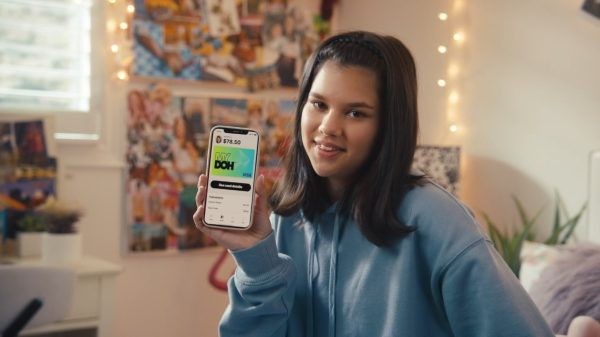Bell Let’s Talk is giving attention to not-for-profits in creative promoting the tenth year of the fundraiser, a shift away from the first-person and cause ambassador narrative accounts of the stigma of mental illness seen in previous campaigns.
The new campaign shows different ways people seek help, whether it’s over the phone, reaching out to a psychotherapist in person or relying on a close network of friends for support, while weaving in references to like-minded organizations that can help with this search.
According to Mary Deacon, chair of Bell Let’s Talk, its insights find that people dealing with mental illness often do not know how to seek out the proper resources, hence Bell’s focus on different community groups like Kids Help Phone (with which the telco has had a three decade-long plus relationship), the Canadian Mental Health Association or the youth-empowering mental health charity Jack.org.
https://youtu.be/PZpCKEZcGwU
“This year, the approach has been to spotlight not-for-profit organizations playing an important role in filling service gaps, ” Deacon says, especially organizations that focus on young people, typically the demographic that struggles the most with its mental health issues.
According to Deacon, while Let’s Talk – which sees Bell donate funding to mental health initiatives based on the number of times the message is shared digitally on Let’s Talk Day – resonates across all demographics, it remains strongest with young people and is a generation-defining issue, reflected in where the campaign is being seen. “We are continuing to expand our efforts on campuses, colleges, universities, and CGEPs,” Deacon says. “We are helping to create a standard for campuses to improve health and well being of students on campus, aligned with how we are investing our philanthropic dollars.”
According to Bell’s insights, in 2019, 84% of Canadians felt comfortable talking about mental health, double the amount that said the same in 2014. Deacon says that now that more people feel the stigma of mental illness has been reduced, now it’s time to “create more action.”
The organizational vision, she says, is a Canada where everyone can get the mental health supports they need. “We need to get to a place where mental health is treated like physical health, with the same access to supports and services,” she says. In addition to increasing donations, the goal for this campaign to continue to increase engagement to encourage people to take action to create positive change, in schools, communities and workplaces.
The brand has touted its success of generating one billion social media messages surrounding the concept of “Let’s Talk,” and Deacon acknowledges the link between social media and depression. “Things like social media can be used for good or ill, and this is an example of using social for the greater good,” she says. Ultimately, it has a very positive effect on social change, she says. Part of keeping the campaign relevant, Deacon says, is by staying in touch with what people are saying in the national discourse, and “paying attention to what we hear about what else needs to be done.”
Like previous years, the campaign was led by Lg2. Media Experts has been Bell’s MAOR leading the media strategy/execution since the campaign’s inception in 2010.
It began on Jan. 6 and will run until Let’s Day Talk on Jan. 29, with creative including seven TV and radio spots, OOH, web banners and social.

























